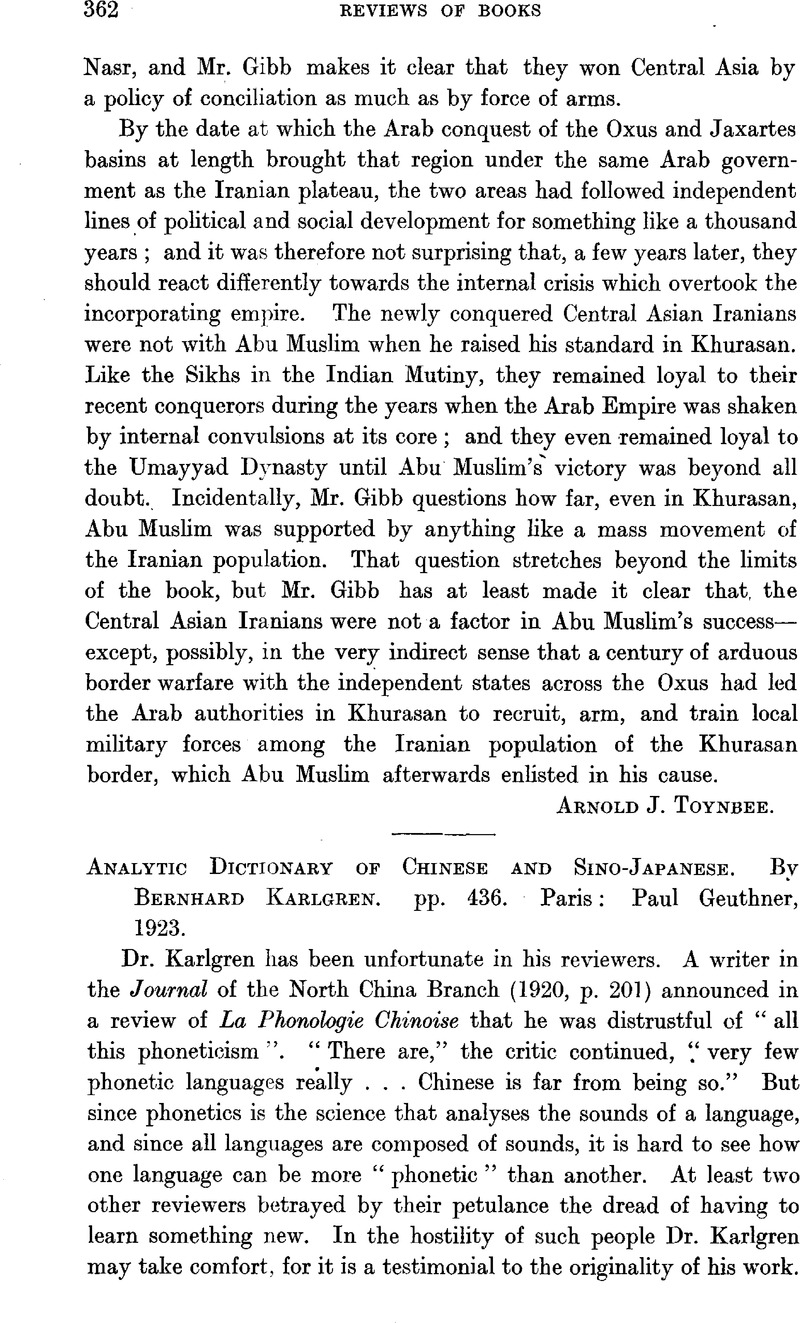No CrossRef data available.
Article contents
Analytic Dictionary of Chinese and Sino-Japanese. By Bernhard Karlgren. pp. 436. Paris: Paul Geuthner, 1923.
Published online by Cambridge University Press: 24 December 2009
Abstract

- Type
- Reviews of Books
- Information
- Copyright
- Copyright © School of Oriental and African Studies, University of London 1924
References
1 A painstaking book, which, however much one may disagree with its conclusions, is deserving of all respect.
2 Sven Hedin, , Southern Tibet, vol. viii, 239Google Scholar. One of the difficulties of this identification is that the various characters by which the second syllable is transcribed all had an original final m, not n. Concerning the transcription used by Hsüan-tsang, (Hsi Yu Chi, xi, 37, 38)Google Scholar Herrmann says that ![]() had an original final n, and refers the reader to the index of transcriptions at the end of the volume. But, in the index (p. 441), the “alte Umschreibung nach Karlgren” appears with final m. There has here obviously been some negligence. I do not know whether Dr. Karlgren would accept the transcription of
had an original final n, and refers the reader to the index of transcriptions at the end of the volume. But, in the index (p. 441), the “alte Umschreibung nach Karlgren” appears with final m. There has here obviously been some negligence. I do not know whether Dr. Karlgren would accept the transcription of ![]() as pj
as pj ![]() uət, which occurs in the next line and is also labelled “nach Karlgren”. It certainly needs some comment.
uət, which occurs in the next line and is also labelled “nach Karlgren”. It certainly needs some comment.
3 Actually, he calls it the “signifie”, which does not make a very good English word.


